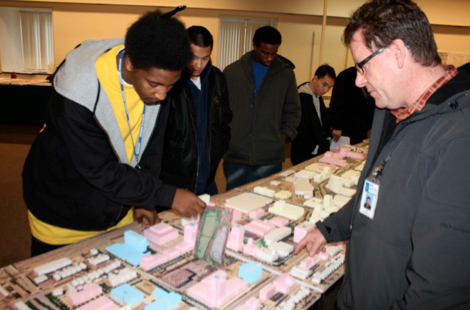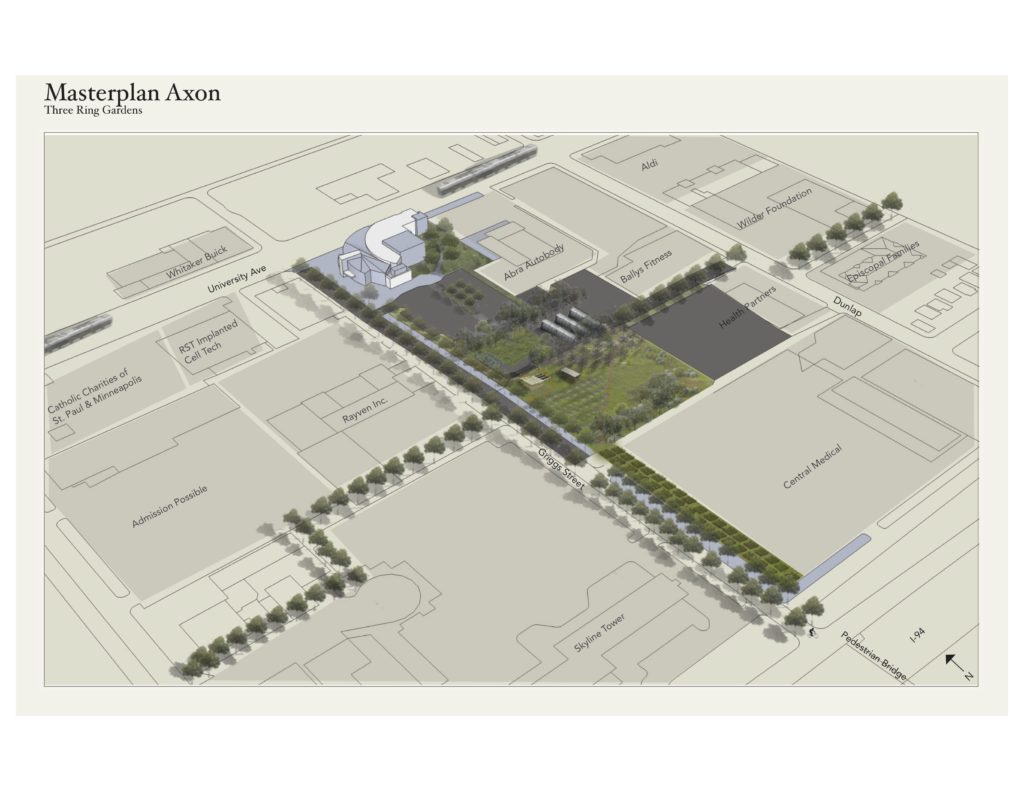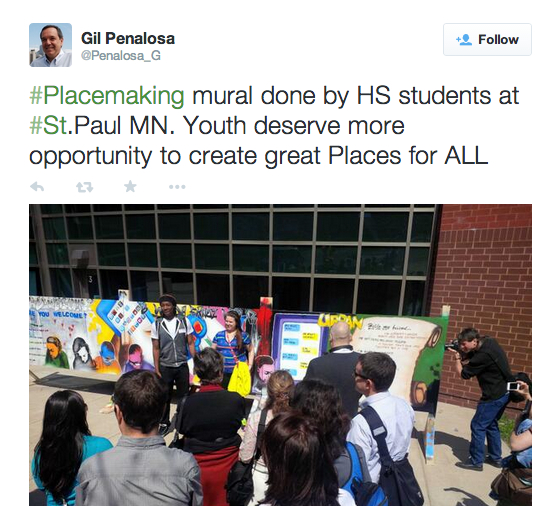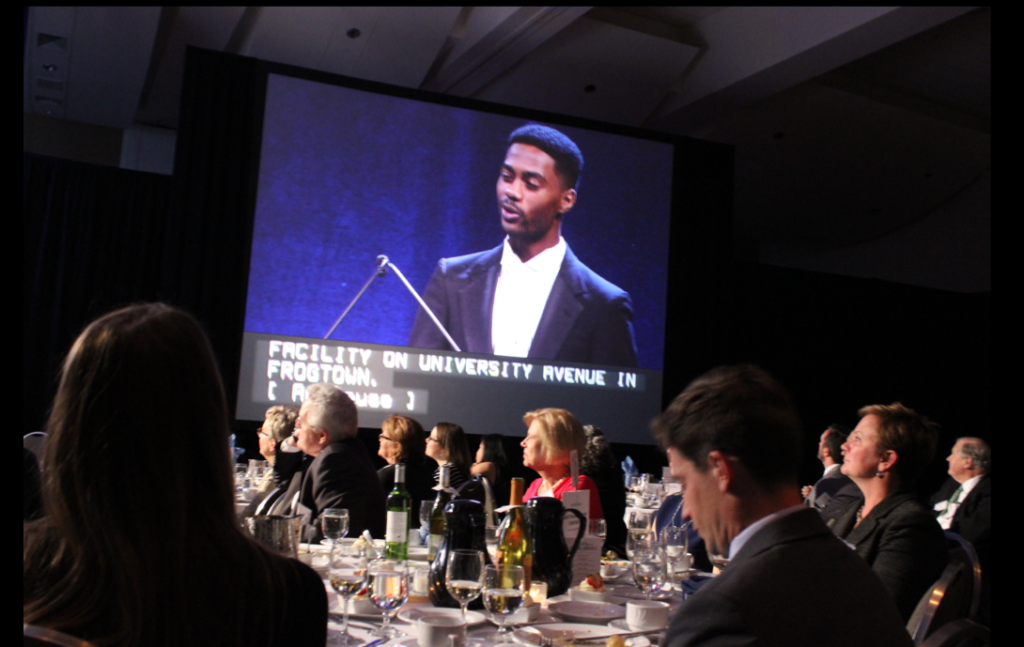Back in 2009, a few Gordon Parks High School teachers took a field trip to see a miniature model of the future design of University Avenue, the street in front of our school. While there, a student noted that there was a green piece of plastic behind our school and exclaimed “They’re going to build a park for us!” Turns out that wasn’t the case, and in fact the green plastic was simply a storm water run off concept. Nonetheless, the idea was born. Later that day staff and students contacted the realtor for the two vacant properties behind our school. Seven years later, and those properties now belong to the City of St. Paul and are being developed as future park spaces. We told the story about the piece of green plastic hundreds of times, and each time, it has grabbed the attention of current students. We listened to them, and we’re listening now.
The City of St. Paul had a similar vision for the property, and greatly valued our work to revive the concept. CEDS played a big role in our school’s involvement with this community opportunity because we were able to articulate specific and strategic levels of involvement with state standards. Students and staff were creating a two for one scenario where authentic learning was occurring in the classroom and there was a tangible ripple effect on green space access in the community.
Involvement and progress on this green space project impacted the student’s perception of whether they could influence local civic dialogues. Many students began their engagement by mocking the prospect of fundraising 2 million dollars. One student said, “Why are we wasting our time with this.” Engaging with something that seemed impossible provided sufficient inspiration to this same student as he became a leader on the project. Projects like this challenge the assumption that there is only an external locus of control. Students learned that they could influence public dialogue, and they had the capacity to do this. The structured school setting, availability to storytelling resources, and a connection between school curriculum and civic engagement made this possible.
To connect with the expertise we needed, we hired a local filmmaker to work with the students to create an Advocacy Film. Students prepared presentations and presented them at community events. Each one of these presentations resulted in increased community awareness about the green space opportunity and about our school. The students also created a portable mural, telling the story about the lack of green space access in our city. A renowned urban planner posted a pic of it on his Twitter account.
A part of the process that proved particularly effective during the Three Ring Garden project was the use of Community Scoring Rubrics. Students developed community presentations on the Three Ring Garden concept, and in order to get all students in a class involved, we required that all present at these events. In order to find out about these community events pertaining to green space and gardens, students conducted research in class and communicated with community leaders versed on this topic. As a way of de-centering the instructor and shifting input to community members, Teachers present at the event circulated the room, asking for community members to complete scoring rubrics for the student presenters. Each student needed to get 3 scoring sheets completed in one evening. It was a memorable experience for students and community. These scores impacted the teacher’s score of their presentation.
The CEDS work on the Three Ring Gardens culminated in a student presentation in the spring of 2015. Two students, Song Her and Marquis Mendoza prepared a presentation with the help of all students in a Social Studies and English block class, (the same used for Transitions) and presented to a group of city policymakers. This public presentation opportunity resulted in spectacular and uncommon results. A private donor came forward and donated $500,000 to the 3RG green space effort.
“When your students are involved, it changes the tenor of the conversation.” This comment was heard by a GPHS staff member after their students were involved with an Arts Advocacy day at the Minnesota State Capital. It speaks to the possibility civic change when teachers connect their students with community topics. The authentic aspect of this curriculum that students perceive is that there is a chance, a margin of possibility that their curricular work could have a social impact. For many, even the possibility feels sufficiently different than traditional instruction.
Of course not all CEDS projects will result in social impact, but its important to note that the process is the goal and results, while they are attractive by-products, are not the central goal of CEDS. The goal of this approach to curriculum is creating digital storytelling connected with civic engagement, that results in tangible communication with an authentic audience. This audience then, if empowered around a topic, could become an active Democratic citizenry. Click here for an article from the Pioneer Press about how GPHS’ curriculum connects with the community.




